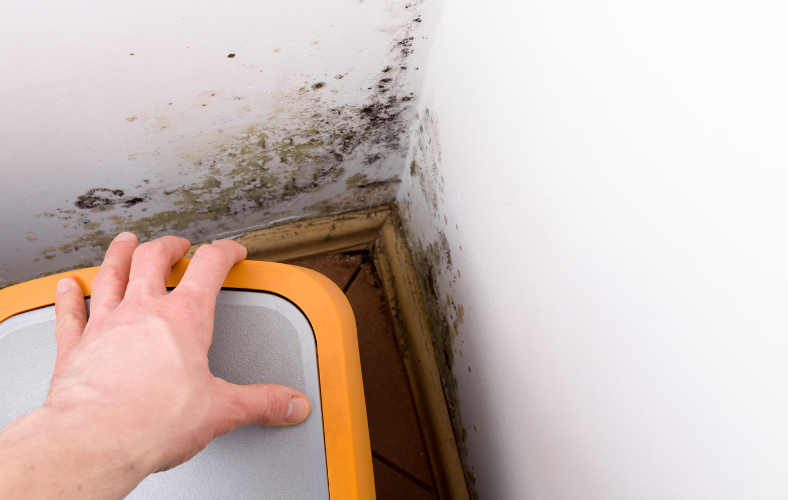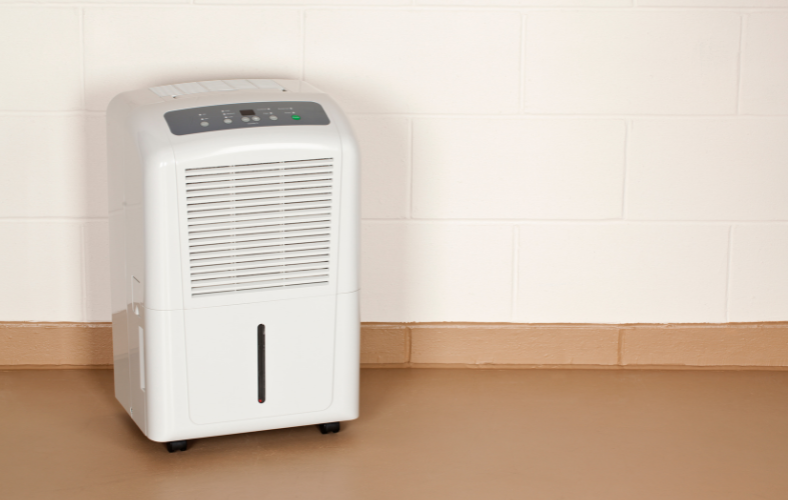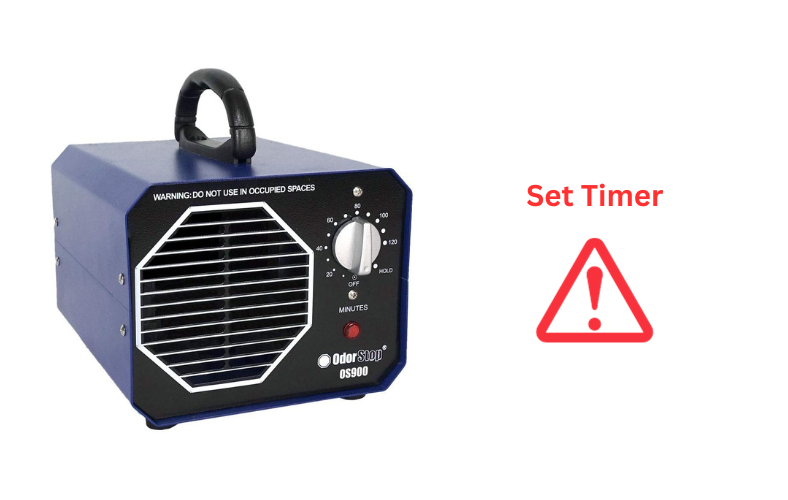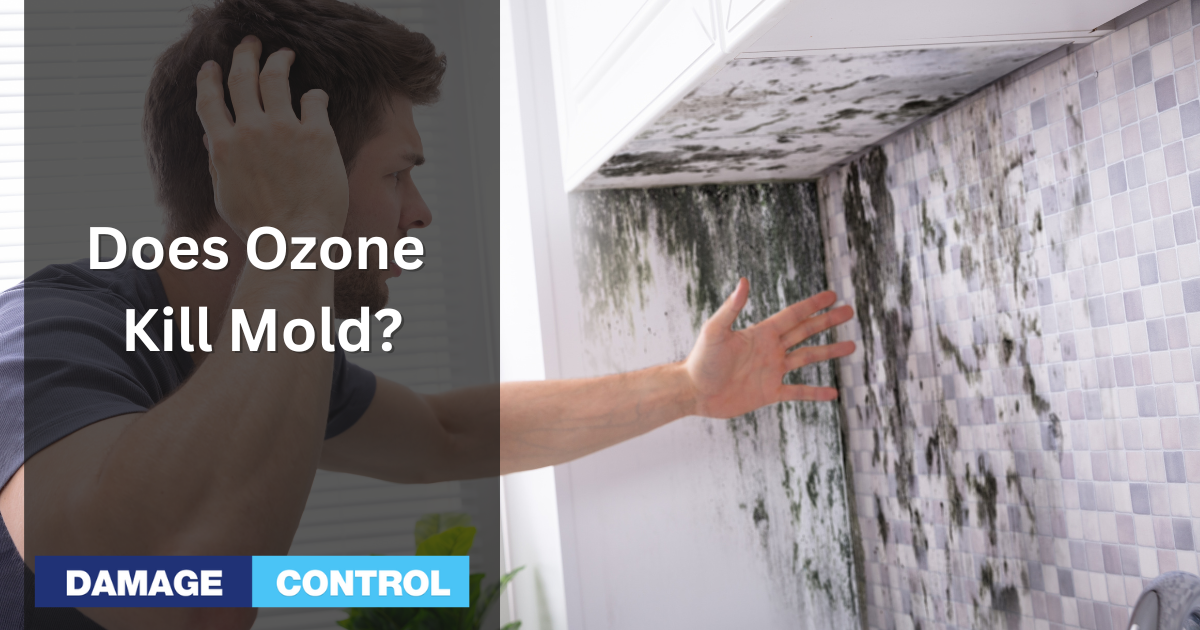Ozone can eliminate odors and kill and stop mold spores from growing, but it's not enough to remove all the mold. To fully solve the problem, you first need to clean or remove the areas where mold is found, and then you can use ozone.
But is it safe?
It is also safe because people and pets are removed from the treated space before use.
We'll learn about ozone, how it takes on mold, and its home-use safety factor. Plus, we'll look at how you can use it to prevent black mold. We'll explore other options besides ozone. Because safety is paramount,
DIY ozone machines are out. There are more than ample safety concerns with self-built O3 units. It's not even on the table for most, and shouldn't be.
Ozone kills mold spores in the air, which is how mold reproduces and is the culprit of mold-related disease and illness.
It's best at prevention, not abatement. For the average DIY type, it can also be used to help remove active spores from the air before starting the removal process.
We sometimes use them at the end of a job to eliminate that lingering odor of mold where damage was extensive.
We recommend ozone generators for the DIY crowd as a preventative measure and general odor control in the home. Even pet urine odors are no match for ozone when the machine is used correctly.
We use air scrubbers for mold and its spores.
They're set up with HEPA filtration to capture the spores instead of changing their chemical makeup, as ozone does. However, air scrubbers are very expensive compared to ozone generators that are fit for home use.
You would likely be surprised by the usefulness and wide scope of the practical applications of ozone generators for the average individual, homeowner, landlord, hunter, or swimming pool owner.
Let's get to the meat of the topic.
What is Ozone?
Three oxygen atoms come together to create the ozone molecule known as O3. This volatile gas is a natural part of our Earth's atmosphere and is produced by human activities.
Ozone is like a guardian in its natural form, creating a protective barrier high above. This barrier serves as our defense against the sun's damaging ultraviolet rays.
Have you ever noticed that crisp scent following a thunderstorm? That's thanks to a spike in atmospheric ozone due to lightning and the electrical charges they fill the skies with as thunderstorms approach you.
Properties of Ozone
Ozone, often referred to as O3, is a powerful oxidant. It's even more effective than regular oxygen (O2) due to the extra oxygen atom it carries around.
This extra oxygen atom is eager to jump ship and attach to other substances, which gives ozone its super-reactive nature. It changes the chemical makeup of all organic materials, rendering them completely inert. This is why ozone is so efficient at removing odors in many situations.
How Does Ozone Kill Mold?
Here's how the process works. The eager-to-attach oxygen atom in the ozone molecule breaks free and attacks the mold spore. This attachment process is known as oxidation.
When the ozone oxidizes the mold spore, it causes a chemical reaction. This reaction alters the makeup of the spore, disrupting its structure and functionality.
The spore is rendered harmless, turning it into inert organic matter that can no longer grow, spread, or continue causing foul odors.
This process doesn't just take out the mold spore in question. The released oxygen atom can continue to react with other mold spores or organic materials, wreaking more havoc on unwanted microorganisms.
It's like setting off a chain reaction of destruction against harmful organic matter.
Leaving No Trace Behind
The beauty of ozone lies in its residue-free nature. After its job, ozone breaks down into regular oxygen again, leaving no harmful by-products behind. This makes it a safer choice for mold prevention, as it won't contribute to further contamination or pose additional health risks.
So, in a nutshell, ozone's high reactivity and oxidizing properties make it a formidable foe against mold spores and other organic materials. It attacks and alters these invaders, rendering them inert and harmless.
Plus, it leaves no dangerous residue, making it a clean, effective option for tackling mold issues before they become a problem.
Using Ozone Generators
Pros often use these gizmos.
Odor removal services use them. But you can also buy one online if you're looking to handle a smaller problem yourself, given you're comfortable with it.
Who else uses them?
Landlords use them between occupancy to completely deodorize the home, apartment, condo, etc., before the new tenant moves in.
There's nothing more effective against smoke odors. Some auto detailers offer smoke-smell removal for people who've recently purchased a used car only to find out a few days later that a smoker owned it.
The odor comes back because they took shortcuts or didn't understand the correct processes; you may need several cycles to eradicate the offensive odors.
Ozone has many uses, including killing mold spores.
Is Ozone Safe for Humans and Pets?
No, ozone isn't safe for humans and pets to be exposed to in any significant amount. This doesn't mean you can't use an ozone generator to treat your home. You can't use it in an occupied room.
Exposure to ozone gas can cause coughing, chest tightness, and difficulty breathing, even if you're only exposed for a few seconds. It can also irritate your eyes, nose, throat, and lungs.
Prolonged exposure to ozone can cause asthma, chronic lung diseases, and even death. Follow the safety rules, and you'll be alright.
Here's another key point concerning exposure.
You'll instantly know if the concentration levels are too high when you enter a room that's been treated. If it's a high concentration, you'll react similarly to that of CS gas (Tear Gas). You'll instantly move to exit. It's that obvious and uncomfortable.
Here are some steps to take for safe indoor ozone use:
- Ensure people, pets, and plants are not in the area during treatment.
- Close any spots where air could escape, but leave a small vent for O2, like a slightly opened window.
- Once treatment is complete, let the room sit for 3 hours to convert back to oxygen.
- Don't use near heat sources like stoves or furnaces.
- Unplug and cover electronics, or remove them from the space.
- Never use an ozone generator that doesn't have a timer.
We get it; most tell you to seal off the area thoroughly, but allow me to plead my case. An ozone generator converts O2 into ozone, so what happens in the room when all available oxygen is converted to O3?
Over time, it converts back to O2, but the machine still runs on a timer with nothing to convert.
If the machine runs for 30 minutes and it's out of O2 in 15 minutes, you lose half of your treatment time because it's all in transition to or from O2 to O3. Leave a crack in a window or a way for air to enter the room. You'll get better results per treatment.
Remember, for more challenging issues like mold odors, smoke odors, pet odors, and worse, sometimes it will take multiple timed treatments.
Stick to these guidelines, and you can lower your risk of health problems while attaining better results. Plus, you can enjoy its mold-prevention benefits.
Ozone does a good job of killing mold spores, but you need to use it wisely. To ensure you're safe and effective, follow the guidelines for home ozone use before starting treatment.
Why do we keep rambling about the spores? It's because the spores are how it spreads and makes you sick. If you see visible mold, they produce more spores. If they land in the right conditions, another colony is born. It's easy to see why the spores need to go. Ozone is the only thing that can destroy 100% of them in any given space.
How To Use Ozone To Kill Mold
Prepping The Space

To prepare the room, you should clean the room as thoroughly as possible. A bathroom, for example, will need all hard surfaces in the room cleaned with a strong surface cleaner such as bleach.
Ozone can't kill mold growing inside building materials like drywall, wood, etc.
These types of porous materials must be removed to eliminate the growing mold. Ozone may remove the smell but doesn't physically remove mold or mold spores. Physical removal requires mold remediation services or some elbow grease on your part.
Dehumidify The Space

For the ozone to work effectively, you need to dehumidify the space. Ozone works best in a dry environment.
Vacate The Space

Remove people, pets, and plants from the space while treatment continues. This includes fish in aquariums. Ozone is a gas that can cause severe respiratory distress and even death if you're exposed to it for too long. Do not risk this.
Set The Timer For 1.5 Hours

Set up the ozone generator to be treated in the middle of the space. Leave a window cracked slightly to allow new oxygen in; if you leave the space completely sealed up, the machine will run out of oxygen to convert into ozone, which won't be as effective.
You want to set the timer for 1.5 hours and do multiple treatments instead of running it for long periods.
If your ozone generator doesn't have a timer on it, you should purchase a smart plug like this one on Amazon that you can use to shut the machine off without going into the room. You don't want to rely on going into the room to shut it off.
Turn The Machine Off And Wait

Your machine should turn off by itself if it's on a timer. If it isn't, turn it off using the app for the smart plug recommended previously. We don't recommend holding your breath and entering the room to do this. You should also open the space up to allow the ozone to dissipate. Stay away from the entryway.
After the machine is off and the space is opened up, you must wait at least a few hours to let the ozone fade before re-entering.
Conclusion
In conclusion, ozone can be an effective way to kill mold spores in your home. It is important to remember that it must be used safely and correctly after cleaning and removing visible mold for the best results. Ozone is a powerful oxidant and should not be used around humans or pets without proper safety precautions.
Suppose you are looking for an alternative method of killing mold. Other options include using natural cleaners or hiring a professional water damage restoration and mold remediation contractor. Ultimately, when it comes to whether ozone kills mold, the answer is yes!

